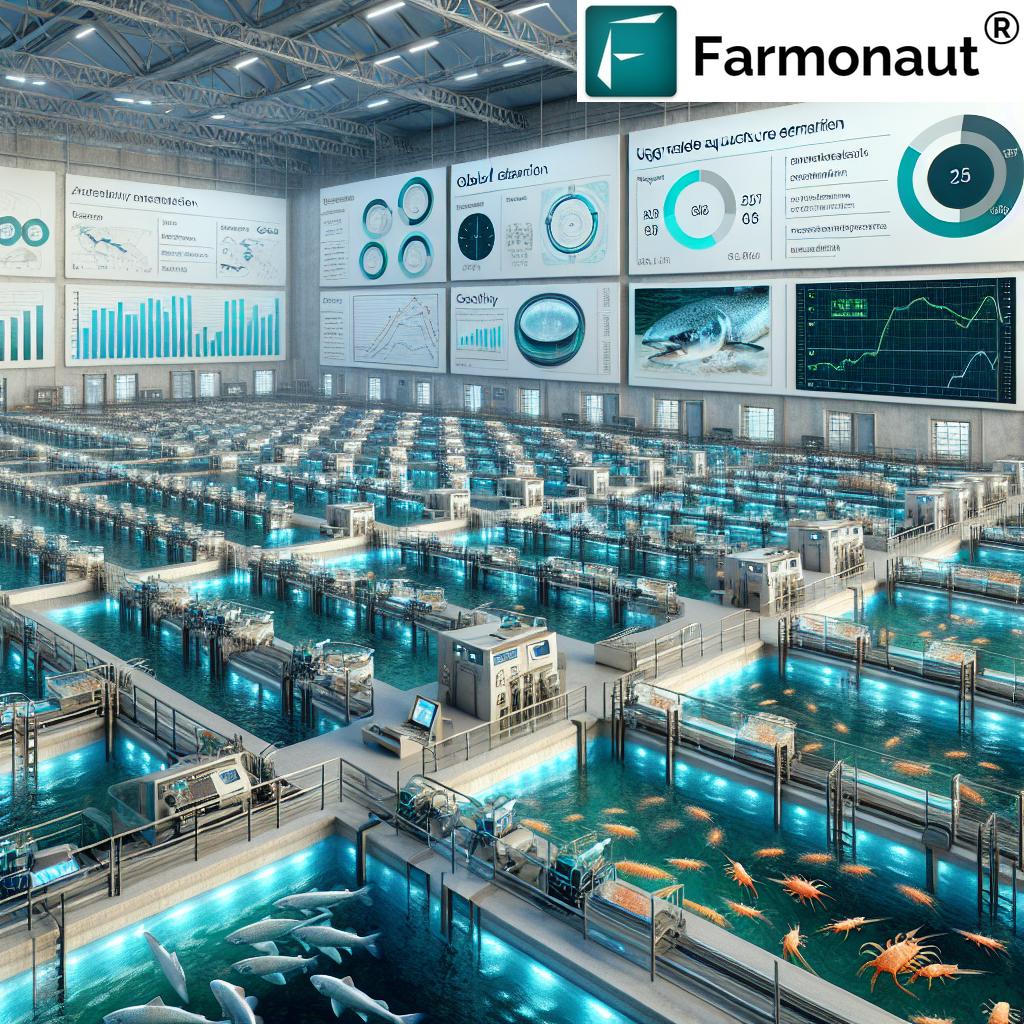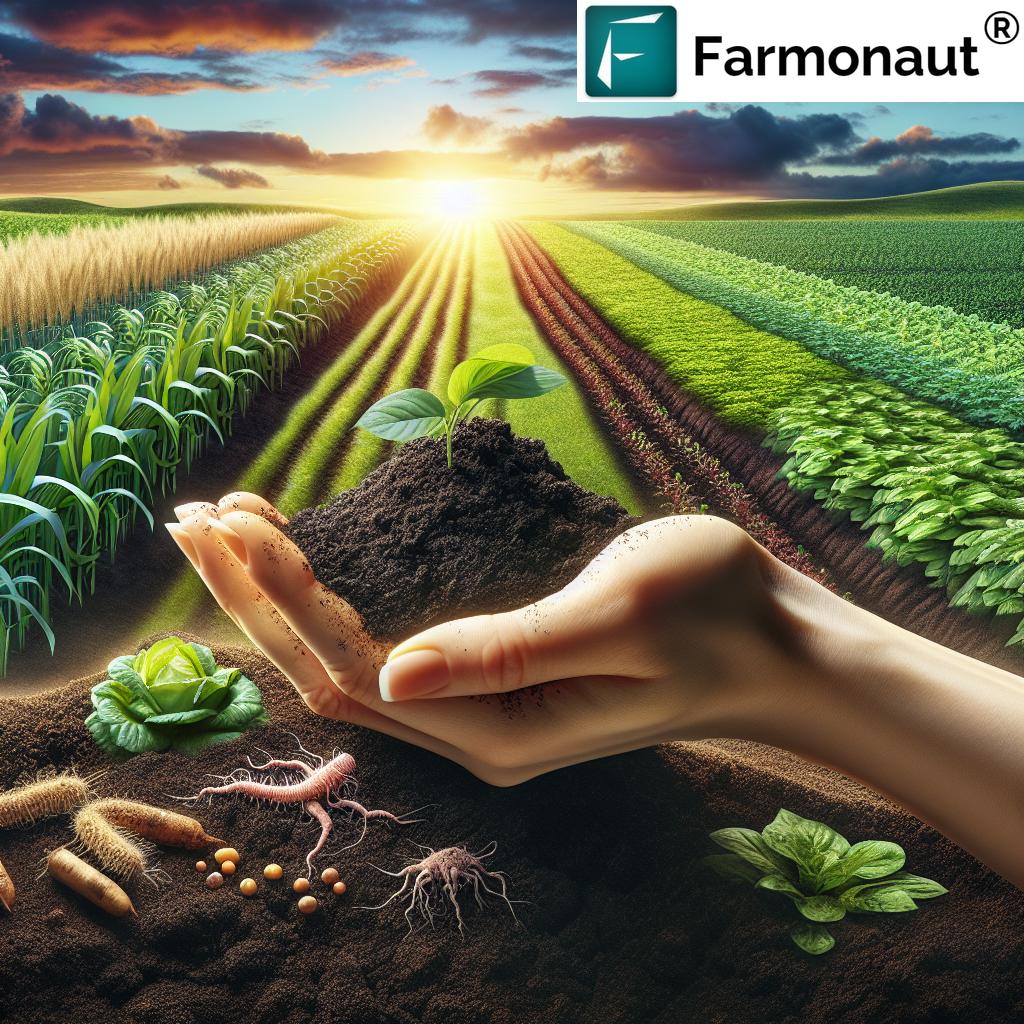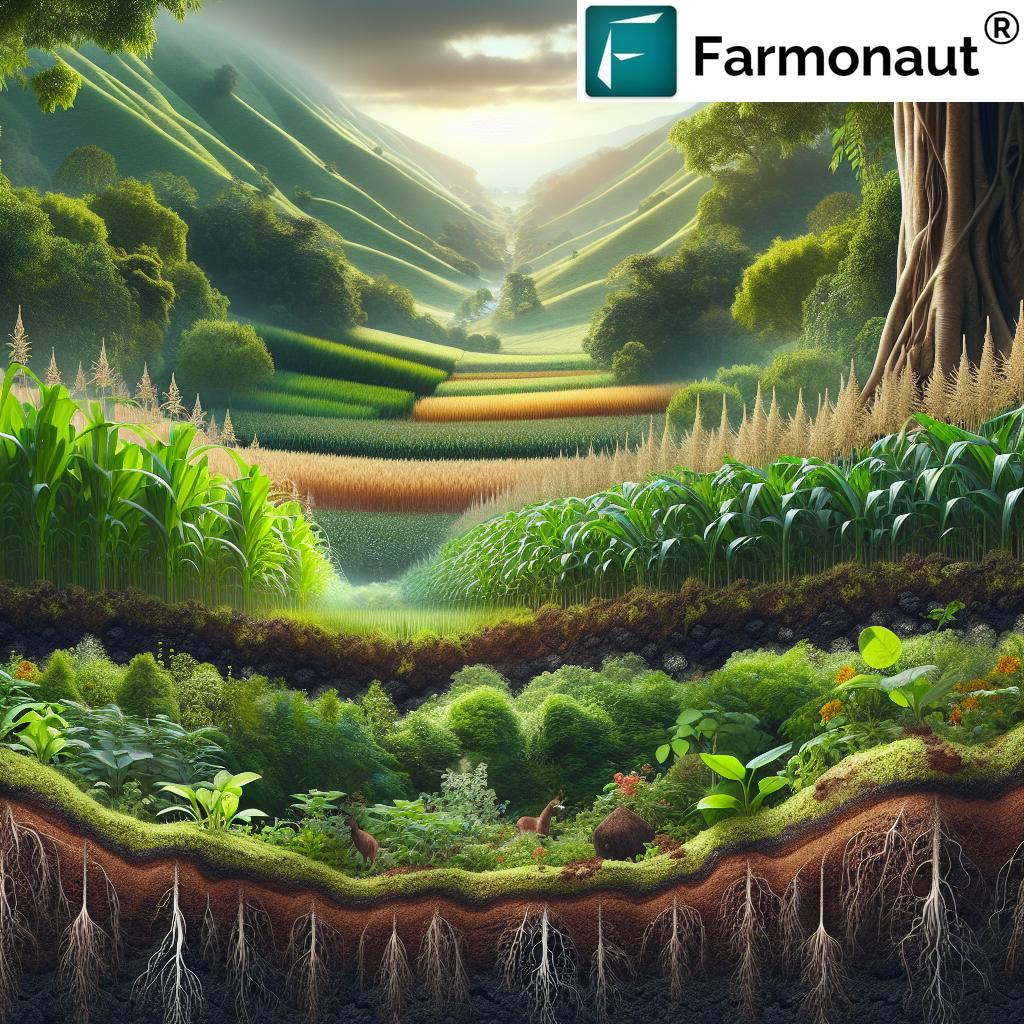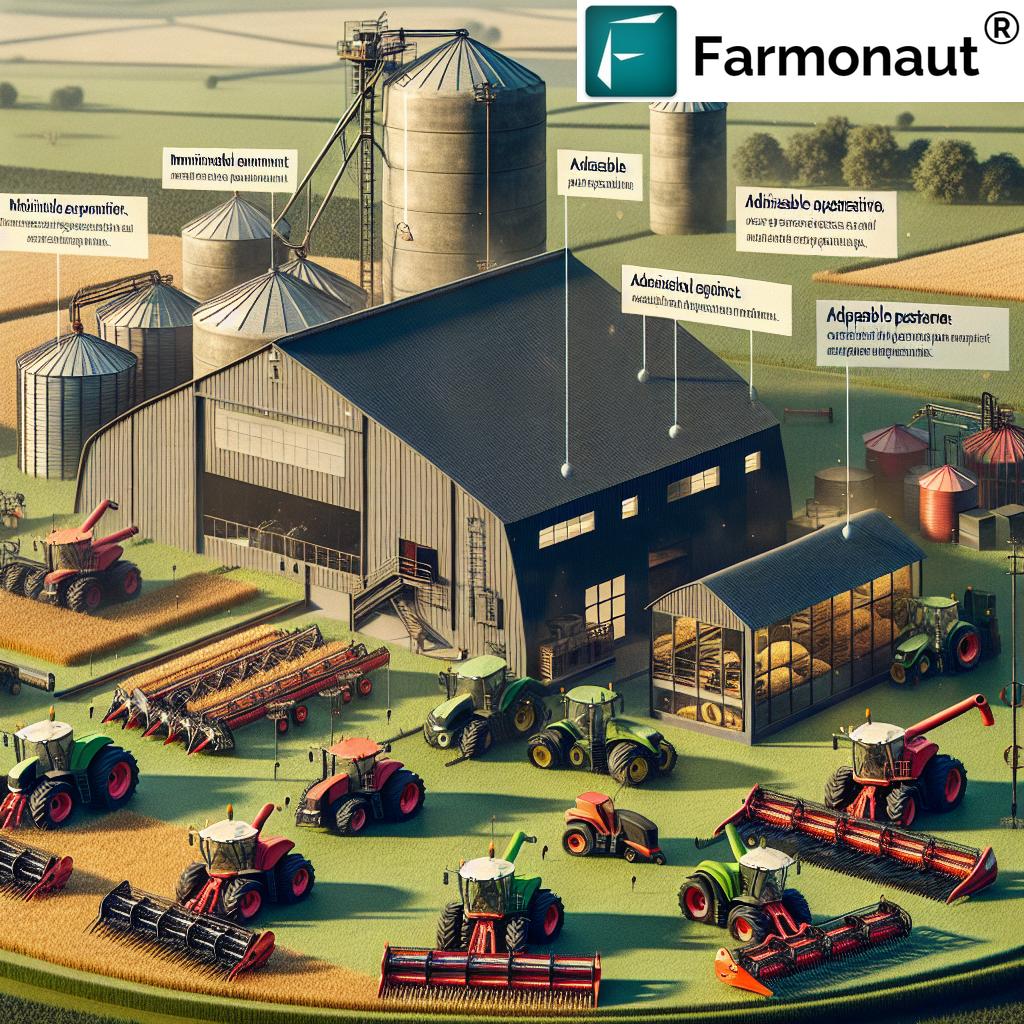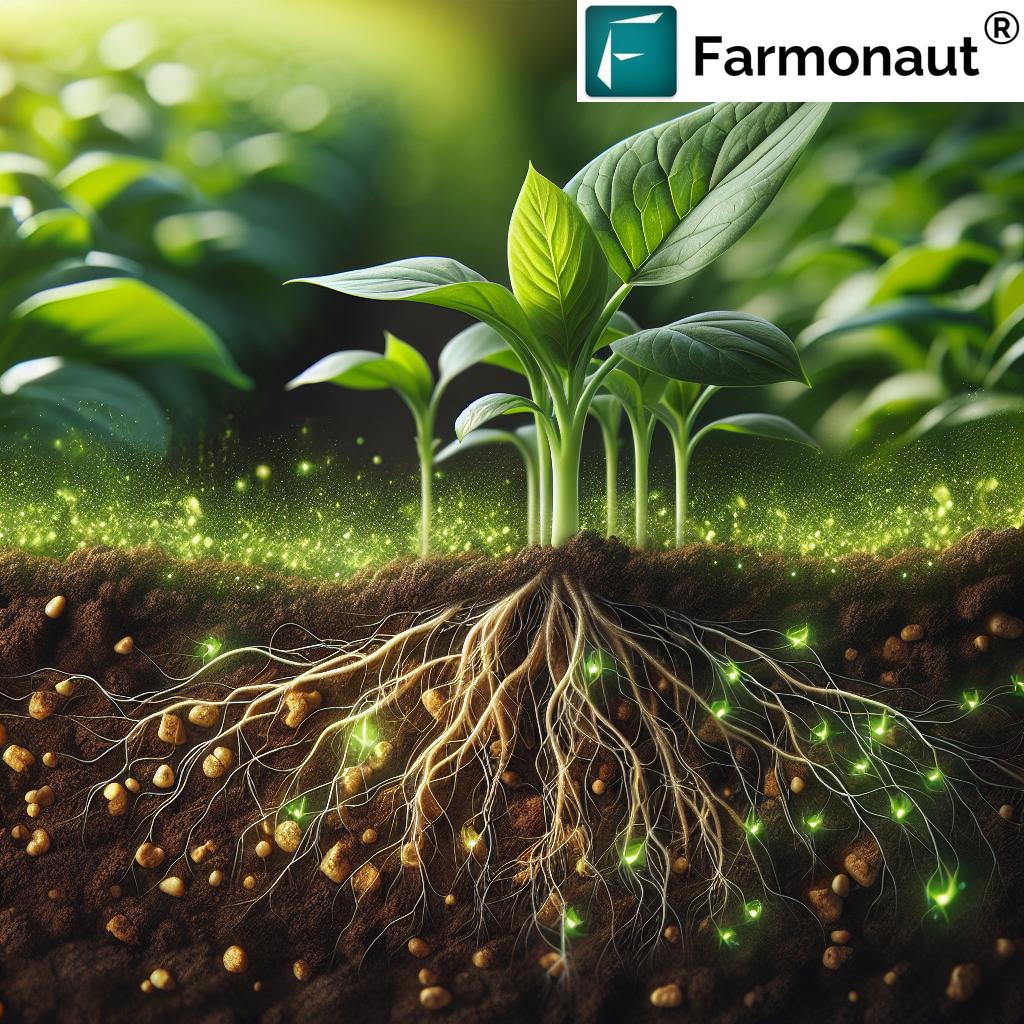Fish Farming Breakthroughs: 7 Game-Changing Secrets
“Global fish farming production has surged by over 500% since 1990, revolutionizing the aquaculture industry worldwide.”
Table of Contents
- Fish Farming: An Overview
- Historical Context & Global Significance
- Commonly Farmed Species and Aquaculture Systems
- 7 Game-Changing Fish Farming Breakthroughs
- Sustainability & Environmental Impact of Aquaculture
- Technological Advancements in Fish Farming
- Empowering Sustainable Aquaculture with Farmonaut
- Comparison Table: Key Aquaculture Innovations
- Economic & Social Impacts
- Frequently Asked Questions (FAQ)
Fish Farming: An Overview
At its core, fish farming (also known as pisciculture) involves the commercial breeding and cultivation of fish species—and often other aquatic organisms like crustaceans and mollusks—within controlled environments such as tanks, ponds, or enclosed water bodies. As a crucial subset of aquaculture, fish farming plays a pivotal role in today’s global food production, helping address the ever-growing demand for seafood while alleviating pressure on wild fisheries and aquatic populations.
We believe that understanding the context, origins, and global significance of modern fish farming helps us appreciate the enormous strides this industry has made in recent decades. In this blog, we’re excited to walk you through the game-changing secrets and breakthroughs that are setting new standards for sustainable aquaculture worldwide.
Historical Context & Global Significance of Fish Farming
A Journey Through Time: Ancient Practices to Modern Industry
The origins of fish farming date back thousands of years. Ancient civilizations, notably in China, practiced sophisticated aquaculture methods like the rice-fish system. This historical integration of rice field cultivation and fish farming established a symbiotic relationship, where fish aided in pest and weed control, while their nutrient-rich waste enhanced soil fertility for rice crops.
Records from the Wei dynasty (220–265 AD) mention the rearing of carp in flooded rice paddies—a testament to early innovation in harmonizing aquatic species and traditional agriculture ([source](https://en.wikipedia.org/wiki/Rice-fish_system?utm_source=openai)). Through centuries, these traditional practices have been refined, laying the groundwork for modern aquaculture systems.
Cornerstone of Global Seafood Production
Over recent decades, fish farming has emerged as a cornerstone of global seafood production. By 2016, aquaculture accounted for nearly 47% of all fish consumed worldwide. China alone is responsible for a staggering 62% of the world’s farmed fish.
With the world’s population climbing and protein demand surging, our reliance on farmed fish has only intensified. This rapid growth has helped offset the severe decline in wild fish stocks—a result of decades of overfishing and unsustainable capture fisheries ([source](https://en.wikipedia.org/wiki/Fish_farming?utm_source=openai)).
- 1960s–2020s: Fivefold surge in commercial fish production—an industry now valued at well over $300 billion annually!
- Key Producers: China, Indonesia, India, Vietnam, Norway, and Chile lead global aquaculture.
- Societal Impact: Employs millions globally, ensuring food security and economic stability for entire regions.
Fish farming is no longer merely a complement to wild fisheries: it’s now an indispensable component of global food systems, helping address both present and future food security challenges.
Farmonaut’s Advanced Agri Solutions: Precision Crop Area Estimation – Egypt Case Study
Commonly Farmed Species and Modern Aquaculture Systems
Key Species in Commercial Fish Production
- Carp: The backbone of Asian aquaculture. Highly adaptable and resilient, carps thrive in diverse water conditions, making them a preferred choice in the rice-fish cultivation of China, India, and beyond.
- Catfish: Widely farmed in the United States and Southeast Asia, prized for their mild flavor, fast growth, and robust health.
- Salmon: A key export of Norway and Chile, farmed salmon is renowned for its rich taste and valuable omega-3 content.
- Tilapia: Known for its tolerance to varying environments and rapid growth, tilapia is farmed globally, especially valued in tropical regions.
- Other Aquatic Organisms: Many systems also support shrimp, prawns, and mollusks—aquatic diversity is central to sustainable aquaculture.
Diverse Aquaculture Systems
Effective and sustainable aquaculture practices rely on the integration of various farming systems tailored to species, market demand, and environmental conditions. Some of the most influential systems shaping the future of fish farming include:
- Cage Systems: Floating cages or net pens installed in natural bodies of water (lakes, rivers, or coastal zones). These enclosures allow fish to benefit from natural water movement while enabling population control and selective breeding.
- Raceways and Flow-through Systems: Channels or tanks with a continuous flow of fresh water, supporting healthy fish growth and rapid waste removal.
- Recirculating Aquaculture Systems (RAS): Closed-loop setups that minimize water usage by filtering and recycling water, often paired with hydroponic beds for integrated fish-plant systems.
- Integrated Rice-Fish Cultivation: Echoing ancient Chinese approaches, fish (typically carp) are reared alongside rice in paddy fields, mutually benefitting both crops and reducing input needs ([learn more](https://en.wikipedia.org/wiki/Rice-fish_system?utm_source=openai)).
7 Game-Changing Fish Farming Breakthroughs
Let us now shine a light on the seven most revolutionary secrets driving modern aquaculture success and shaping the industry’s future. Each breakthrough addresses core challenges in fish farming—from sustainability and profitability to technological sophistication and minimized environmental impact.
-
Recirculating Aquaculture Systems (RAS): Water-Savvy Revolution
Recirculating Aquaculture Systems represent a watershed in sustainable aquaculture. Unlike traditional open pond or cage systems, RAS continuously filters, cleans, and recycles up to 99% of the water used. This innovation drastically reduces environmental footprint, water demand, and disease transmission.
- Enables intensive, controlled fish cultivation even in landlocked or arid regions
- Safer and more consistent production cycles
- Facilitates precision monitoring of water quality, temperature, oxygen, and nutrients
Key Benefit: Compliance with environmental regulations and lower risk of ecosystem disruption.
“Recirculating aquaculture systems can reduce water usage in fish farming by up to 99% compared to traditional methods.”
-
Biofloc Technology: Turning Waste into Wealth
Biofloc leverages microbial communities to convert fish waste directly into protein-rich feed within the water, enhancing nutrient recycling and reducing environmental impact.
- Improves feed conversion and reduces operational costs
- Minimizes water exchange; ideal for areas with limited fresh water
- Suppresses pathogens naturally through improved water quality
Key Benefit: Efficient nutrient utilization and minimal waste discharge.
-
Automated Feeding Systems & IoT Integration
Smart, sensor-based automated feeders powered by IoT enable tailored, precise food delivery as per fish growth stage, hunger level, and species requirements.
- Significant reduction in feed waste (a key cost in fish farming)
- Supports optimal fish health through regular, accurate rations
- IoT sensors track water quality, temperature, and feeding events in real-time
Key Benefit: Enhanced productivity and cost-efficiency.
-
Machine Learning for Disease Prediction and Farm Management
The use of machine learning algorithms elevates farm management, enabling the mining of patterns from extensive sensor and farm data toward predictive insights.
- Early detection of diseases and stress based on behavioral and environmental indicators
- Automated alerts for potential outbreaks, greatly reducing fish loss
- Optimization of breeding conditions, feeding schedules, and energy use
Key Benefit: Maximized yields, reduced risk, and optimized resource allocation.
-
Blockchain-Based Traceability for Ethical and Verified Operations
Blockchain-based traceability solutions bring unprecedented transparency to the supply chain. Each batch of farmed fish can be tracked from hatchery to market.
- Ensures authenticity and trust, vital for high-value international seafood trade
- Enables quick and transparent recalls or audits
- Builds consumer confidence in sustainable and ethical sourcing
Key Benefit: Strengthens reputation and aligns operations with emerging ethical standards.
-
Carbon Footprinting for Sustainability
Carbon tracking tools (like those offered by Farmonaut) allow aquaculture businesses to monitor and actively reduce their carbon emissions across all production stages.
- Supports compliance with increasingly strict carbon regulations
- Assists in identifying key areas for improvement in energy, feed, and logistics
- Boosts sustainability credentials for consumers and regulators alike
Key Benefit: Facilitates greener, future-proof operations.
-
Integrated Rice-Fish Cultivation: Reviving Ancient Wisdom in Modern Context
The rice-fish system embodies ancient Chinese ingenuity, updating it for today’s sustainability imperatives. By growing fish in rice fields, we unlock mutual benefits—fish provide nutrient cycling, pest control, and improved soil aeration, while rice fields offer a protective, productive environment.
- Reduces dependence on chemical fertilizers and pesticides
- Enhances ecosystem resilience and biodiversity
- Ensures dual harvests, maximizing economic returns per hectare
Key Benefit: Strong synergy with regenerative and sustainable aquaculture practices.
Farmonaut | Making Farming Better With Satellite Data
Sustainability & Environmental Impact of Aquaculture
As we innovate, it’s essential to recognize the environmental impact of aquaculture and commit to responsible practices. Fish farming, if poorly managed, can cause local water pollution, spread diseases, and disrupt delicate ecosystems, especially in cage and pen systems placed in open natural water bodies.
- Waste: Uneaten feed and excreta can overload aquatic systems, triggering algae blooms and oxygen depletion.
- Chemical Use: Reliance on antibiotics, pesticides, or antifoulants may affect wild species and human health downstream.
- Escapes: Farmed fish, particularly genetically distinct or non-native species, can disrupt local wild populations if they escape.
However, sustainable aquaculture practices—including RAS, integrated rice-fish systems, responsible feed management, and carbon footprinting solutions—are now at the forefront of the industry’s evolution. Stringent regulations and ongoing innovation are critical to ensuring sustainability.
Farmonaut Web app | Satellite Based Crop monitoring
Technological Advancements in Fish Farming & Aquaculture
Technological advancements are the backbone of efficient, sustainable aquaculture. They enable us to customize production, reduce costs, and meet stringent environmental and ethical standards.
Let’s explore how technology is transforming commercial fish production:
- IoT Sensors & Automation: From water quality meters to automated feeders and climate control, connected devices provide real-time, actionable insights for optimal fish growth and welfare.
- Machine Learning and AI Advisory: Adaptive, data-driven decision-making—improving feed conversion ratios, anticipating diseases, and forecasting optimal harvest times.
Farmonaut’s Jeevn AI Advisory System exemplifies how AI can deliver custom, real-time strategies ([learn more](https://farmonaut.com/app_redirect)). - Blockchain Traceability: Digital ledgers enable transparent, fraud-proof fish supply chains, enhancing product traceability and regulatory compliance.
- Remote Sensing & Satellite Monitoring: Satellite technologies, such as those on the Farmonaut platform, help monitor large-scale operations, track resource usage, and minimize environmental impact over time.
- Carbon Monitoring: With tools like Farmonaut’s Carbon Footprinting, fish farms can analyze carbon output and reduce their climate impact.
Combined, these innovations are key to supporting the rapidly growing global seafood demand without compromising our environment or food security.
Farmonaut Introduction – Large Scale Usage For Businesses and Governments
Empowering Sustainable Aquaculture with Farmonaut
For those of us committed to sustainable fish farming and resource efficiency, accessing precision technology is no longer a luxury, it’s a necessity. Farmonaut bridges this gap by providing a suite of satellite-driven, AI-powered, and blockchain-supported tools—ensuring efficient, transparent, and sustainable aquaculture operations.
Key Farmonaut Offerings for Aquaculture Stakeholders
-
Satellite-Based Farm & Waterbody Monitoring:
Receive real-time insights via remote sensing into pond or cage biomass health, nutrient levels, and environmental stressors—integral to maximizing yield and minimizing input waste. -
Jeevn AI Advisory:
AI-driven, customized interventions for water quality, feeding schedules, fish health monitoring, and harvest timing—ensuring our farms run efficiently in changing environments. -
Blockchain Traceability:
Seamless digital records for every batch, enabling full product traceability and regulatory compliance—building trust across the aquaculture industry and among consumers. -
Resource, Fleet, and Logistics Management:
Optimize farm logistics via fleet management tools—reducing costs, emissions, and operational downtime for large-scale aquaculture businesses. -
Sustainability and Compliance Support:
With carbon footprinting, monitor and reduce your operations’ environmental impact—vital in today’s climate-conscious world. -
Insurance and Finance Facilitation:
Enable accurate, satellite-based verification for aquaculture-related insurance and crop loan products; supporting financial security and reducing fraud. Learn more about crop loans and insurance.
Comparison Table: Key Fish Farming Innovations and Their Impacts
| Technology/Practice | Estimated Adoption Rate (%) | Environmental Impact | Cost Efficiency | Global Growth Trend |
|---|---|---|---|---|
| Recirculating Aquaculture Systems (RAS) | 20–30% | Low | Medium | Rising |
| Biofloc Technology | 10–15% | Low | High | Rising |
| Automated Feeding & IoT | 15–20% | Medium | High | Rising |
| Machine Learning for Disease Prediction | 10–12% | Low | High | Rising |
| Blockchain Traceability | 5–10% | Low | Medium | Rising |
| Carbon Footprinting | 10% | Low | Medium | Rising |
| Integrated Rice-Fish Cultivation | 12–18% | Low | High | Stable (Rising in Asia) |
(Adoption rates are global estimates and may vary significantly by country and region.)
Economic and Social Impacts of Fish Farming
- Food Security and Protein Supply: Fish farming provides a stable, year-round supply of high-quality protein, which is especially crucial as wild fishery stocks face continued declines.
- Employment and Community Development: Aquaculture supports millions of jobs globally—directly in farming, but also in processing, logistics, and technology services.
- Economic Diversification: Investments in aquaculture diversify rural economies, generating new sources of income and supporting sustainable development.
-
Innovation Ecosystem: Continuous innovation in aquaculture systems, genetics, feed alternatives, and digital monitoring are driving new business creation across the world.
For plantation and agro-businesses, Farmonaut’s Large Scale Farm Management App is tailored to facilitate smarter decisions for vast operations.
As the industry advances, robust regulations, ethical farming, and the adoption of new technological solutions will shape the future—ensuring we all benefit from secure, affordable seafood without sacrificing planetary health.
Ready to Elevate Your Fish Farming Operations?
Explore Farmonaut’s subscription packages for real-time, satellite-powered insights—whether you’re an individual farmer, an agribusiness, or a government agency:
Frequently Asked Questions (FAQ)
What is fish farming, and how is it different from traditional fishing?
Fish farming—or pisciculture—involves the controlled raising and breeding of fish within dedicated enclosures such as tanks, ponds, or cages. It differs from wild fishing in that it’s managed, predictable, and designed to meet specific market demand without depleting natural fish populations.
Why is fish farming important for the world’s food security?
With global seafood demand on the rise and many wild fisheries facing collapse, aquaculture ensures a stable and reliable source of protein for billions, directly contributing to food security and improved nutrition.
Are fish farms bad for the environment?
Like any agricultural system, fish farming can have adverse impacts if not managed sustainably. Issues such as water pollution and disease are challenges; however, advances like RAS, biofloc, and blockchain-backed traceability are rapidly minimizing these effects.
How is technology helping make fish farming more sustainable?
- IoT and sensor-first monitoring improve water quality and resource use
- Machine learning aids in disease prevention and optimal resource allocation
- Blockchain provides full supply chain traceability, ensuring ethical sourcing
- Remote sensing and carbon tracking help reduce environmental impact
How does Farmonaut support aquaculture businesses?
Farmonaut delivers real-time satellite monitoring, AI-based farm management, blockchain traceability, carbon footprinting, fleet management, and financial verification—all scalable from smallholder farmers to very large enterprises.
Are there apps for monitoring my fish farm?
Yes! The Farmonaut Web App, Android and iOS apps offer user-friendly, mobile-accessible dashboards for waterbody monitoring, crop analytics, and much more.
Conclusion: Charting a Sustainable Future for Fish Farming
Fish farming—rooted in both ancient wisdom and modern innovation—is now firmly established as a critical component of the global food system. As we’ve explored, its potential to deliver food security, environmental sustainability, and economic upliftment is expanding rapidly thanks to game-changing technological advancements, resource-efficient aquaculture systems, and responsible management.
By embracing the 7 breakthroughs we’ve discussed—recirculating systems, biofloc technology, smart automation, machine learning, blockchain traceability, carbon footprinting, and rice-fish integration—we can ensure that global seafood demand is met sustainably, ethically, and profitably.
With the help of Farmonaut’s platform, any aquaculture stakeholder can access affordable, high-precision satellite and data-driven management tools, democratizing access to productivity and sustainability gains around the world. Explore our apps and API solutions for your fish farming venture today.
Let’s foster a future where fish farming truly contributes to a healthier, more sustainable world.


